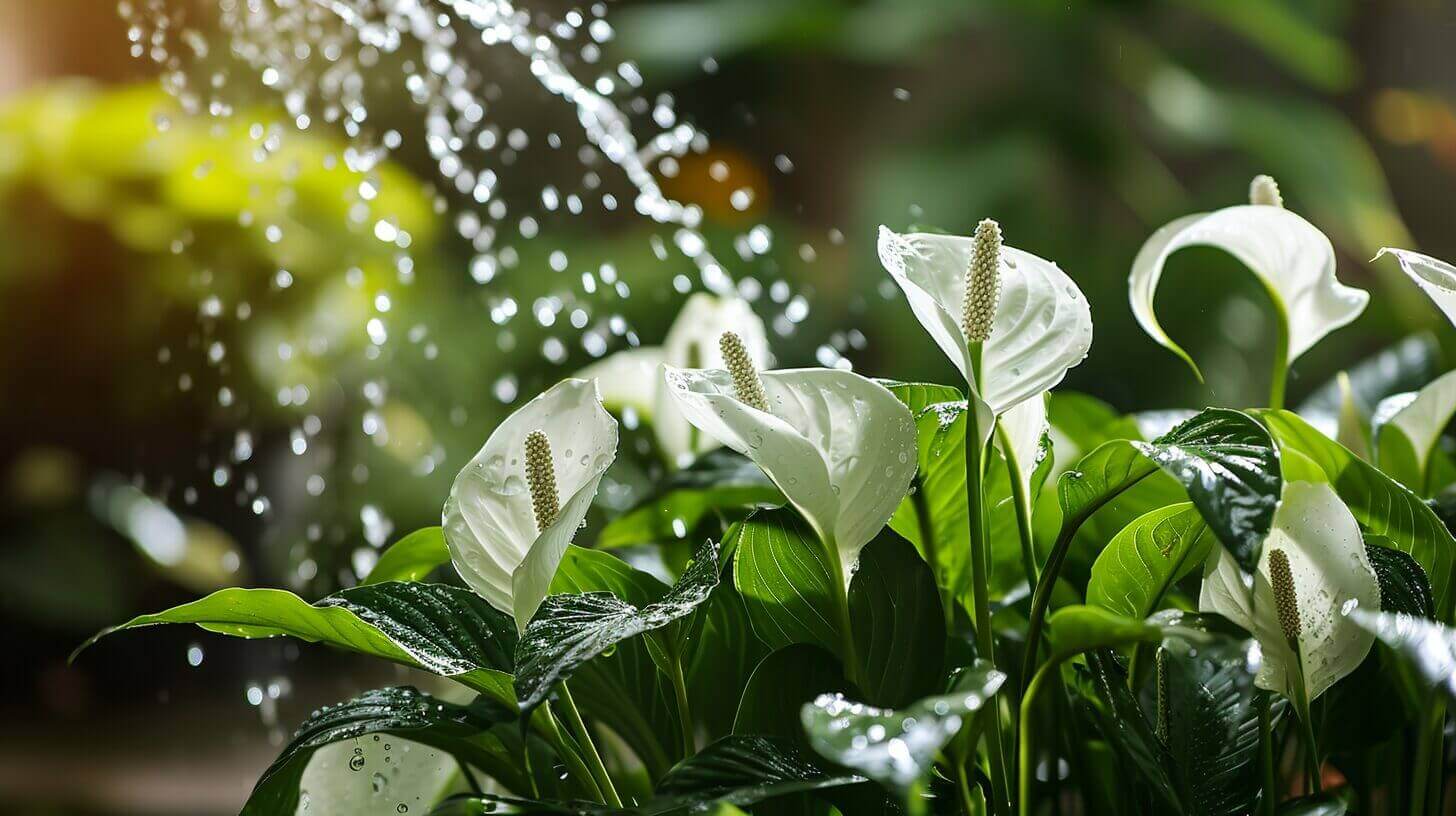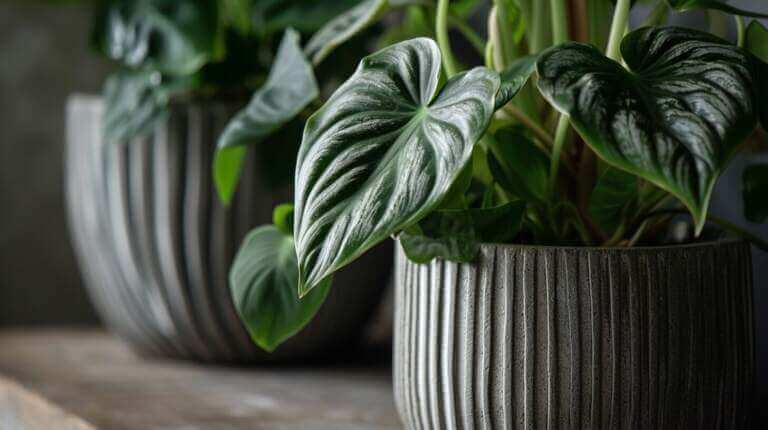How Often to Water Your Peace Lily: Tips for Proper Water Peace Lily Plant Care Guide
Key Takeaways
- Peace lilies have moderate moisture requirements and thrive in consistently moist but not soggy soil.
- Signs of underwatering in peace lilies include wilting leaves that do not recover after watering, dry soil that pulls away from the edges of the pot, and slow growth or lack of new leaf development.
- Signs of overwatering in peace lilies include yellowing leaves that appear waterlogged, foul smell or slimy texture in the soil, and fungus growth or root rot.
- Factors to consider when determining watering frequency include environmental factors, type of potting soil used, current stage of growth, and warmer and drier environments may require more frequent watering.
Understanding the Watering Needs of Peace Lilies
To properly care for peace lilies, it is crucial to understand their specific watering needs, including the recommended frequency of watering per week. Peace lilies have moderate moisture requirements and thrive in a consistently moist but not soggy soil. When determining the watering schedule for your peace lily, it is important to consider factors such as the size of the plant, the pot it is in, and the environmental conditions it is exposed to.
In general, peace lilies should be watered once a week. However, it is important to check the moisture levels of the soil before watering. Stick your finger about an inch into the soil – if it feels dry, it’s time to water. If the soil feels damp, it is best to wait a few more days before watering again. Overwatering can lead to root rot and other issues, so it is essential to avoid keeping the soil too wet.
During hot summer months or if your peace lily is placed in a room with low humidity, you may need to water the plant more frequently. On the other hand, during cooler months or if the plant is in a room with higher humidity levels, you may need to water it less often.
Signs of Underwatering and Overwatering in Peace Lilies
The signs of underwatering and overwatering in peace lilies can be observed through wilting or yellowing leaves, as well as root rot or fungus growth. It is important to pay attention to these symptoms as they can indicate the need for adjustments in the watering routine. Here are some key symptoms and prevention methods to consider:
Underwatering symptoms:
- Wilting leaves that do not recover after watering.
- Dry soil that pulls away from the edges of the pot.
- Slow growth or lack of new leaf development.
Underwatering Prevention:
- Ensure the peace lily is placed in a well-draining potting mix.
- Water thoroughly when the top inch of soil feels dry.
- Consider misting the leaves to increase humidity levels.
Overwatering symptoms:
- Yellowing leaves that appear waterlogged.
- Foul smell or slimy texture in the soil.
- Fungus growth or root rot.
Overwatering Prevention:
- Use a well-draining potting mix to avoid waterlogged soil.
- Allow the top inch of soil to dry out before watering again.
- Use a watering schedule based on the plant’s individual needs.
By understanding the symptoms and taking the necessary preventive measures, you can ensure the proper care and health of your peace lilies. Now, let’s explore the factors to consider when determining the watering frequency for peace lilies.
Factors to Consider When Determining Watering Frequency for Peace Lilies
Factors to consider when determining the watering frequency for peace lilies include the plant’s environment, potting soil, and current stage of growth. These factors directly impact the overall health and well-being of the plant.
The environment in which peace lilies are placed plays a crucial role in determining their watering needs. Factors such as temperature, humidity, and air circulation affect how quickly the soil dries out. In warmer and drier environments, peace lilies may require more frequent watering compared to cooler and more humid settings.
The type of potting soil used also affects the watering frequency. Well-draining soil, such as a mixture of peat moss, perlite, and vermiculite, allows excess water to drain away, preventing the roots from sitting in overly wet conditions. On the other hand, heavy or compacted soil retains water for longer periods, increasing the risk of root rot.
Lastly, the plant’s growth stage influences its watering needs. During active growth, peace lilies may require more frequent watering to support their increased metabolic activity. However, during dormant periods, such as in winter, they require less water as their growth slows down.
To determine the optimal watering schedule for peace lilies, it is essential to consider these factors and regularly monitor the moisture level of the soil. By striking a balance between not overwatering or underwatering, peace lilies can thrive and maintain their overall health and well-being.
The Best Watering Techniques for Peace Lilies
Implementing proper watering techniques, such as using a watering can or misting the leaves, can greatly enhance the health and vitality of peace lilies. These techniques ensure that the plant receives the right amount of water without overwatering or underwatering.
Here are three effective techniques for watering peace lilies:
- Watering can: Using a watering can allows for precise watering, as you can control the amount of water being poured. Slowly pour water onto the soil until it starts to drain out of the bottom of the pot. This ensures that the roots receive enough moisture without causing waterlogging.
- Misting: Peace lilies thrive in humid environments, so misting their leaves regularly can help provide the necessary moisture. Fill a spray bottle with water and mist the leaves, making sure not to saturate them. This helps mimic their natural habitat and keeps the foliage healthy.
- Watering schedule: Establishing a consistent watering schedule is crucial for peace lilies. They prefer slightly moist soil, so water them when the top inch of soil feels dry to the touch. This typically equates to watering every 7-10 days, but it may vary depending on factors such as temperature and humidity levels.
Common Mistakes to Avoid When Water a Peace Lily Houseplant
An article determiner is one of the essential elements of a sentence. In the context of watering techniques for peace lilies, the article ‘the’ is commonly used to refer to specific watering methods.
When discussing watering frequency, it is important to consider the specific needs of peace lilies. These plants prefer to be kept consistently moist, but not overly wet. One common mistake that people make when watering peace lilies is either overwatering or underwatering them. Overwatering can lead to root rot and other issues, while underwatering can cause the plant to wilt and suffer from dehydration.
To avoid these mistakes, it is recommended to water peace lilies when the top inch of soil feels dry to the touch. This can vary depending on factors such as the temperature and humidity in the environment. It is also important to use well-draining soil and pots with drainage holes to prevent water from sitting in the roots.
Frequently Asked Questions
Does the Amount of Sunlight Affect How Often I Should Water My Peace Lily Plant?
The optimal sunlight for peace lilies determines the frequency of watering. Peace lilies flourish in indirect light, making them sensitive to direct sunlight. If exposed to excessive light, their leaves might wilt and develop brown spots. On the contrary, insufficient sunlight can hinder their growth and reduce water requirements. Keeping your peace lily in the appropriate light conditions will ensure you water it adequately.
Is Repotting Necessary for Properly Watering a Peace Lily Plant?
Repotting is crucial when it comes to propagating peace lilies. By repotting, you ensure that the plant has enough space for its roots to flourish, promoting healthier growth. Additionally, repotting allows for a fresh potting mix, which aids in proper watering. So, if you want your peace lily to thrive, don’t overlook the importance of repotting.
Can I Use Tap Water to Water My Peace Lily Plant?
Tap water can be used to water peace lilies, but it is important to consider its safety and potential effects on the plant. Tap water may contain chemicals such as chlorine or fluoride, which can be harmful to peace lilies.
To ensure the health of your plant, it is advisable to let the tap water sit for 24 hours to allow the chemicals to dissipate. Alternatively, using filtered or distilled water can be a safer option for watering peace lilies.
How Do I Know if My Peace Lily Needs More Water?
Determining when to water a peace lily is crucial for its health and well-being. Signs of underwatering include wilting leaves, dry soil, and yellowing foliage. It is important to note that peace lilies prefer slightly moist soil, but overwatering can lead to root rot. Therefore, proper drainage is essential to prevent waterlogged soil.
To ensure your peace lily receives the right amount of water, check the soil regularly and water when the top inch feels dry.
Can I Mist My Peace Lily Instead of Watering It?
Misting a peace lily can be a helpful way to increase humidity around the plant, but it should not be used as a substitute for watering. While misting can provide some hydration to the leaves, it does not reach the plant’s roots, which is where it needs water the most.
Peace lilies prefer consistently moist soil, so it is important to water them thoroughly and allow the excess water to drain away. Misting can be a supplement to watering, but it should not be relied upon as the sole source of hydration for a peace lily.
What Should I Do if my Peace Lily is Overwatered Accidentally ?
If you accidentally overwatered your peace lily, there are several steps you can take to address the issue.
First, remove any excess water from the pot to prevent further saturation.
Next, allow the soil to dry out before watering again, ensuring that you only provide enough water to moisten the soil.
It is also important to check the drainage of the pot and adjust as necessary to prevent future overwatering.
Can I Use a Self-Watering Pot for My Peace Lily?
When considering whether to use a self-watering pot for a peace lily, it is important to understand the benefits and disadvantages.
Self-watering pots can provide convenience by automatically providing water to the plant, reducing the risk of under or overwatering. However, they can also lead to stagnant water and root rot if not used properly.
It is crucial to monitor the moisture levels and adjust accordingly.
Ultimately, the decision to use a self-watering pot should be based on the individual’s ability to properly maintain and monitor the plant’s water needs.
How often to water peace lily indoor plant?
The frequency of watering a peace lily can depend on several factors such as the size of the plant, the pot it’s in, and the environment. However, a good rule of thumb is to water your plant when the top inch of soil feels dry.
What are some tips for watering a peace lily?
When watering your peace lily, it’s important to use filtered water as tap water can contain chemicals that are harmful to the plant. Also, avoid overwatering as this can lead to root rot.
How much water does a peace lily need?
The amount of water a peace lily needs can vary based on its size and the conditions it’s growing in. However, it’s generally recommended to keep the soil moist but not soggy.
Can you grow a peace lily indoors?
Yes, a peace lily is an excellent indoor plant. It thrives in indirect light and prefers a tropical environment with high humidity.
What should be my watering schedule for a peace lily?
A watering schedule for a peace lily isn’t set in stone as it depends on the conditions of your home. However, watering once a week is usually sufficient.
Why is my peace lily drooping even after watering?
If your peace lily is drooping even after watering, it may be due to overwatering or under-watering. It’s important to check the moisture level of the soil before watering.
How often should I water my potted peace lily?
A potted peace lily should be watered when the top inch of soil feels dry. This could be once a week or more often to water peace lily plant depending on the conditions in your home.
How can I tell if my peace lily is getting too much or too little water?
If your peace lily is getting too much water, you may notice yellow leaves or root rot. If it’s getting too little water, the leaves may wilt or turn brown.
What type of light do peace lilies like?
Peace lilies like indirect light. They can tolerate low light conditions but they won’t bloom as well.
How can I help my peace lily grow and bloom?
To help your peace lily grow and bloom, provide it with indirect light, keep the soil moist but not soggy, and maintain a high humidity environment.







